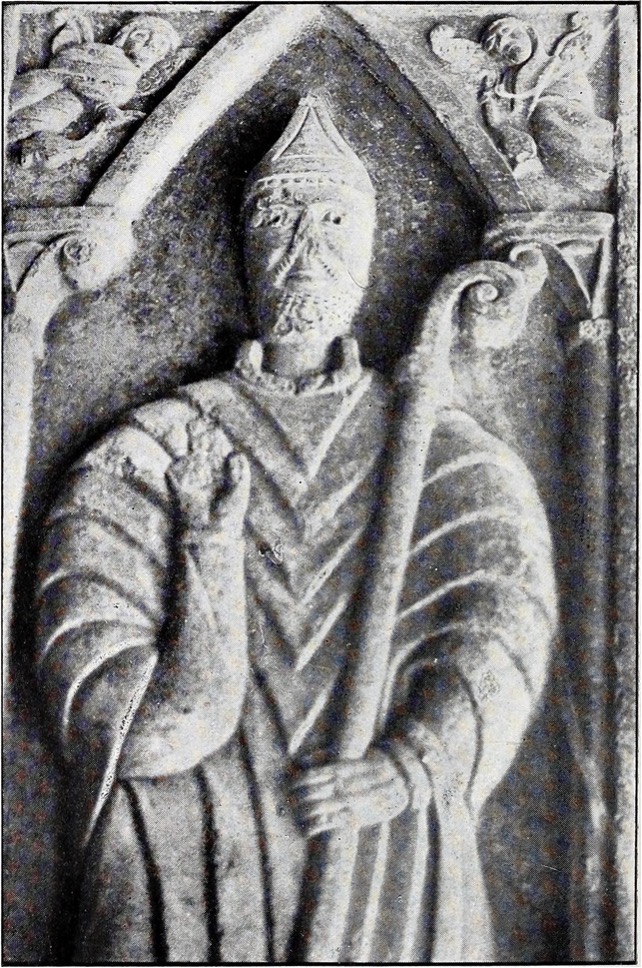Callum Jamieson is a University Tutor at the University of Glasgow. He successfully defended his PhD thesis in December 2023 that was entitled ‘Papal Judges-Delegate in England, c.1130-c.1216’. In keeping with his work on papal judges-delegate, Callum is now focusing on the interaction of English nuns with the system of papal judges-delegate in the twelfth and early thirteenth centuries.

In the mid-twelfth century, litigants from across Europe began to bring their legal disputes to the papal curia (court) for resolution. In what is widely recognised by historians of the medieval papacy as an explosion of appeals, the papacy quickly became overwhelmed by the volume of business and were unable to preside over every case. To solve this problem, popes resorted to delegating their judicial authority to more localised ecclesiastics. Known to us as papal judges-delegate, these men received papal authority temporarily over assigned cases and were entrusted with the responsibility of bringing delegated legal suits to a conclusion, either with a definitive judgment or an amicable settlement.
Papal judges-delegate were one type of agent that the papacy used to represent its authority in the localities. Papal legates were another type and were more senior than papal judges-delegate. Legates were said to be the physical representation of the pope in the areas where they held the office whilst judges-delegate were the pope’s vices (vicar), someone who acted in the pope’s place. Even though they were ranked lower than legates, papal judges-delegate were still significant papal representatives, being the most common way that clerics, religious institutions, and even the laity, interacted with papal authority.
The delegation of papal authority to papal judges-delegate occurred across Europe; twelfth- and early thirteenth-century England is an excellent case study for this analysis of this practice due to the vast amounts of evidence that survives. For my doctoral thesis, I explored the work of papal judges-delegate in England between c.1130 and c.1216, finding 790 cases. Important work on papal judges-delegate in the province of Canterbury, 1198-1258, has been done by Jane Sayers, and on the busiest papal judge-delegate in twelfth century England, Roger, bishop of Worcester (1164-1179), by Mary Cheney, yet there was a gap in the study of this significant office in England as a whole in the twelfth and early thirteenth centuries. This is the period where the system of delegation underwent significant refinement, moving from a practice that was somewhat informal in the mid-twelfth century to an institutionalised system during the pontificate of Innocent III (1198-1216), where for the first time there is evidence of curial institutions dedicated solely to the delegation of legal cases.
How did this refinement occur? Was it the result of the papacy issuing pronouncements articulating the authority of papal judges-delegate? Or is it the case that those who conducted the work, i.e. papal judges-delegate themselves, were in the driving seat? As was common with other areas of canon law, the papacy never issued a definitive and all-encompassing definition of the office of papal judge-delegate; they gave answers to questions about the role but only when prompted by requests. Refinement was largely the result of communication between legal practitioners – judges and their iurisperiti (legal experts) – and popes in which questions about procedure and matters of canon law were asked and answered. These answers were taken by legal practitioners, gathered into reference dossiers (or decretal collections; these papal answers are known as decretals, letters issued by the pope with a legal relevance and preserved via legal collections) which were then circulated in a complex process of transmission around England and Europe. Decretal collection is particularly evident in England in the twelfth century, although it did happen elsewhere in Europe. One of these collections, the Collectio Wigorniensis, made in Worcester in the 1180s, features an entire book (one of seven) dedicated to the work of papal judges-delegate (Ad informandum iudices in diversis casibus quandoque emergentibus = For the instruction of judges in diverse cases whenever they appear). Given this, it seems that English papal judges-delegate, or at least their legal assistants, played an important role in this process of refinement of the office in the absence of a wide-ranging papal definition.
So, who acted as papal judges-delegate in England in the twelfth and early thirteenth centuries? In England, the papacy relied on a range of ecclesiastical officeholders to act as papal judges-delegate. Typically, they formed panels of two or three judges, with three-person panels becoming the norm in England in the 1180s. There is a noticeable shift in the type of dignitaries commissioned as papal judges-delegate in England as the twelfth century progresses. Bishops played a leading role as papal judges-delegate in England, particularly in the initial cases. They were prime candidates to receive the earliest commissions. There was a peace-making function essential to episcopal office, as well as the expectation that they heard legal disputes within their diocesan synods. It seems that the papacy relied on the English episcopate in the early days in order to provide legitimacy to the practice of delegation – bishops were familiar faces to litigants. As the delegation of disputes back to England became a more regular occurrence in the 1160s, an expansion of the pool of ecclesiastics was necessary. This is when abbots and priors started receiving commissions as papal judges-delegate. They started to appear as the junior judge to bishops in the 1150s, but they replaced the episcopate as the dominant ecclesiastical dignitaries presiding over delegated cases by the turn of the twelfth century.
Papal judges-delegate were also drawn from the English archdeaconries. Although by the 1180s they could lead a panel of papal judges-delegate, they were more often a junior judge. By the early thirteenth century, cathedral officials received commissions more frequently than they had in the 1160s onwards. Again, this is probably due to the need for more judges as the system of delegation became a routine function of ecclesiastical governance in England.
For delegation to work, the papacy was reliant on existing ecclesiastical infrastructure. Whilst there was a shift in who predominately acted as a papal judge-delegate in England in this pre-institutionalised phase, largely reflecting the demand from litigants, a delegation’s seeming strength is that it relied on pre-existing structures for the delivery of papal justice and was flexible enough to meet the demand for the papal resolution of legal disputes.
